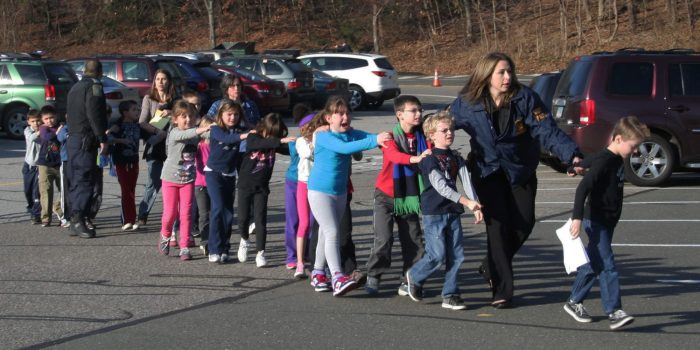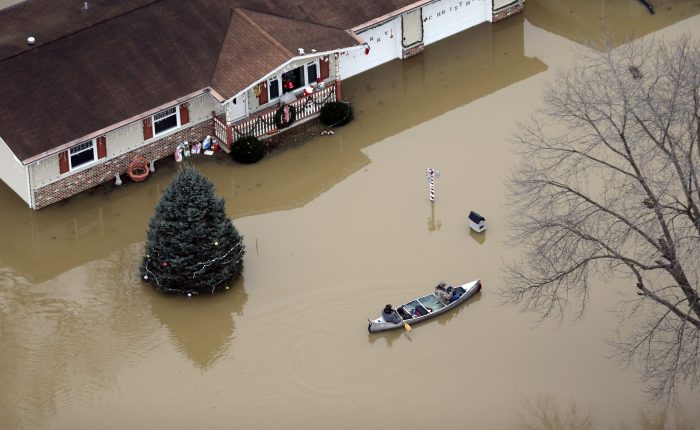How Funders Can Plan for the Unthinkable
From the Sandy Hook Shooting to the Flint Water Crisis, Funders Offer Strategies for Responding to Community Crises My most vivid memories of many national crisis events are wrapped in the conversations I have about them with my sons. The shooting at Sandy Hook broke me as I listened to them talk over dinner about […]

From the Sandy Hook Shooting to the Flint Water Crisis, Funders Offer Strategies for Responding to Community Crises

My most vivid memories of many national crisis events are wrapped in the conversations I have about them with my sons.
The shooting at Sandy Hook broke me as I listened to them talk over dinner about exactly what windows of their school they believed they could escape through if they ever heard a shooter. The shooting at an Orlando nightclub brought on a difficult conversation about how in a country founded on freedom and diversity someone could use religion and sexual orientation to justify terrorism. The news coverage around the Flint Water Crisis spurred a debate on what exactly the phrase “environmental justice” meant.
Those conversations are never far from my mind whenever a crisis happens, and this year, they were often on repeat, as I was given perhaps the most fascinating assignment I’ve ever been handed during my time working for the Center for Disaster Philanthropy: writing a Disaster Playbook strategy to aid funders in responding to a community crisis.
I was honored to interview numerous funders who have been active in responding to various crises. Those interviews were informative, compelling, and emotional. It was impossible to include all of them, their impact, their emotion, and their fullness when I wrote the strategy. However, I did I want to capture and share a few highlights in the hopes that they might trigger ideas and creative thoughts as others think through how they might respond to a crisis of this magnitude.
Chantelle Fisher-Borne, Funders for LGBTQ Issues, on including the LGBQT community in crisis grantmaking: “Be honest with how you respond to every community—these are people who are part of your workforce, your community, your schools. Encourage non-discrimination policies always, but especially during times of crisis, and be mindful that a family is not denied something because they don’t fit the definition of traditional family or that transgender people are not denied a service because of how they look. Funders can also really influence the policy and adherence to the policy through where they direct funding.
Jeff Poulos, Associated Grant Makers, on the Boston Marathon Bombing: “No two instances are ever alike. We had a few people we could call [for events of crisis], but now there are so many instances of things like this. And for us, there were so many layers—an international terrorism incident that involved so many agencies and affected not just Boston as a community, but groups of people across the country and around the world. It’s so difficult to think about preparing for something of that magnitude.”
Deborah Dubin, Gateway Center for Giving, on the Ferguson riots: “August 9, 2014, didn’t create our problems, it exposed them. The St. Louis area has a legacy of racism and segregation that existed long before the situation in Ferguson. One of our members worked really hard to develop a tool that would identify projects that would move the needle and that was something I think was really important. You have to identify what the community believes is going to change things.”
Celeste Amato, Association of Baltimore Area Grantmakers, on the Baltimore riots: “After riots like what we had, there is usually a long period of increased violence, so we knew right away one of our goals had to be programs that kept children off the streets after school and on weekends. That was one of the long-term roles we determined we were going to play in our community. Another thing we placed a lot of emphasis on was determining what conversations we needed to make an effort to extend into community discussions over time.”
Mark Brewer, Central Florida Foundation, on the Pulse Nightclub shooting in Orlando: “Make sure you understand the expectation of people in the community. Compensation funds are very different from funds that meet the long-term needs of a community in a holistic way after an event like this.”
Maggie Osborn, the Forum of Regional Associations of Grantmakers, on what she learned from the response to the Sandy Hook shooting: “Have a plan. Figure out what you can set up ahead of time—the things you can just flip a switch on. Then, have some close conversations with the governor’s office and community leaders. And after you’ve done that, have an internal conversation about when this happens, what are you going to put up on your website or out to your members right away. Directions? A fund? Events that encourage responsiveness in your network? They are difficult conversations, but they are conversations that you need to have.”
Kathi Horton, Community Foundation of Greater Flint, on the Flint Water Crisis: “The one thing you don’t count on is how everything changes. The water crisis here rocked our world and it still hasn’t returned to normal. We have a new normal. We were fortunate that a group of us—the four central funders in the immediate area—regularly met for working lunches. When you build those relationships in the good times, it is much easier to come together and work quickly.”
Karen Gano, Assistant Attorney General, Office of Attorney General George Jepsen, on the AG’s response to the Sandy Hook shooting: “Be transparent. Be really clear and be really fast about telling what and when and how you are planning to use the funds. The other piece of it is that every time a child’s name appears publicly, it causes trauma to the parents and siblings. When there are memorial funds, you have to let the families have a break from it and be involved when they are ready.”
Like everything with the Playbook, the success of this strategy rests completely on feedback and input from funders who have worked through unthinkable scenarios. Please continue to send us your research, lessons learned, and best practices.
More like this

Top 2016 Blogs Reflect Hope in Disaster Giving
